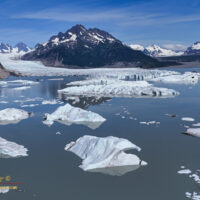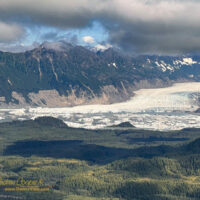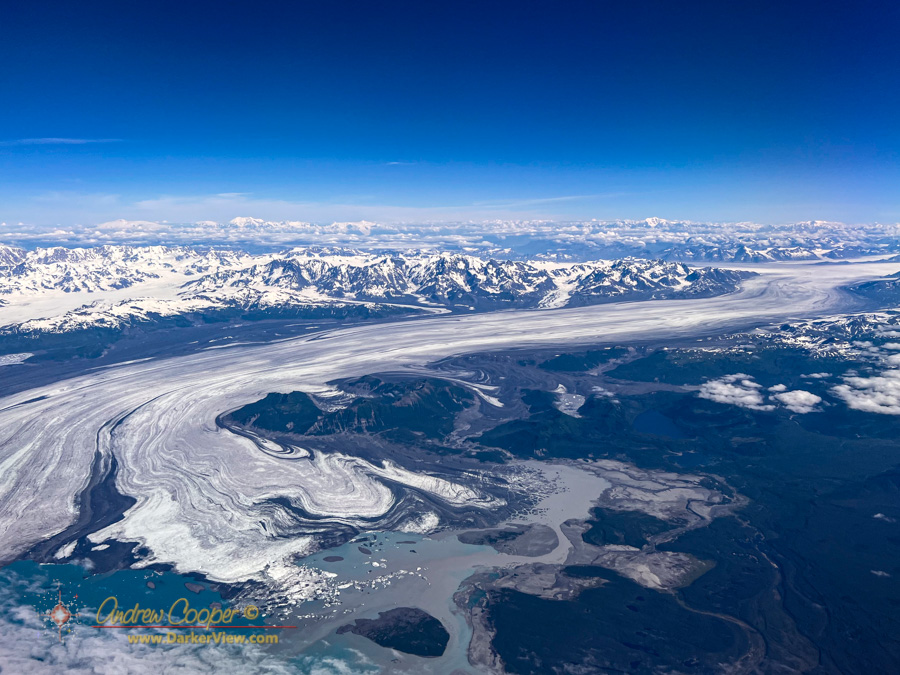Southeast Alaska has so many glaciers, but very few of them are easily accessible. Most require long hikes into wild coutry, floatplanes to remote lakes, or boating through iceberg choked waters to reach. Sheridan Glacier you can drive to.
The glacier is only a few miles from the airport reached by a short gravel road, and an even shorter trail through the woods. Not the glacier itself, as that is about a mile away on the other side of a lake. Rather you reach the shore of a lake covered with icebergs, creating a spectacular scene with the glacier in the background.
At the end of the road the glacier is just visible through the trees as glimpses of ice. A well maintained US Forest Service trial leads to a point from which some of the lake and glacier can be seen.
This first viewpoint has a clever feature. Here you find a simple post with a small recess milled into the top. You can place a cellphone on the post and take a photo. Sending the photo to an email address allows the Forest Service to monitor changes in Sheridan Glacier over time. Not by installing their own expensive remote camera, but rather by simply having visiting tourists contribute their photos.
Going a bit further, my brother and I hiked the short trail around and down to the shoreline looking for a better view of the iceberg covered lake. Where the trail emerged again onto the shore a small moriane offered the view we were looking for, a place to sit and enjoy spectacular scenery. From this little moraine also flew the drone to gain a better vantage for some photos.
The lovely weather would not last long, it was a good decision to use this first afternoon in Cordova to get out and see the glacier and explore further to the end of the road.
















































